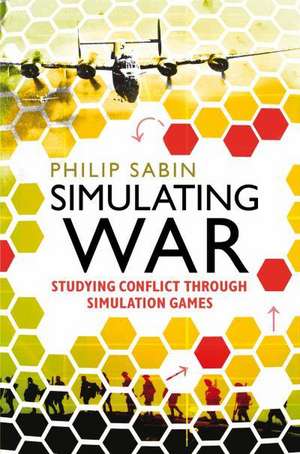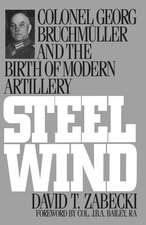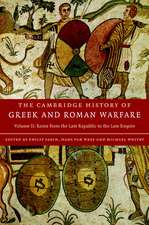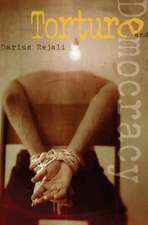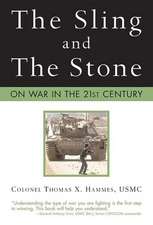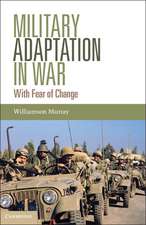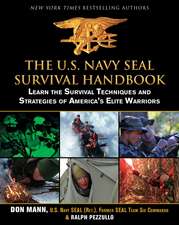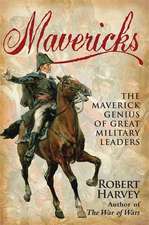Simulating War: Studying Conflict through Simulation Games
Autor Professor Philip Sabinen Limba Engleză Paperback – 23 apr 2014
Preț: 185.77 lei
Preț vechi: 211.91 lei
-12% Nou
Puncte Express: 279
Preț estimativ în valută:
35.55€ • 36.98$ • 29.35£
35.55€ • 36.98$ • 29.35£
Carte disponibilă
Livrare economică 25 martie-08 aprilie
Livrare express 08-14 martie pentru 67.01 lei
Preluare comenzi: 021 569.72.76
Specificații
ISBN-13: 9781472533913
ISBN-10: 1472533917
Pagini: 416
Ilustrații: 26 colour illus
Dimensiuni: 156 x 234 x 23 mm
Greutate: 0.7 kg
Editura: Bloomsbury Publishing
Colecția Bloomsbury Academic
Locul publicării:London, United Kingdom
ISBN-10: 1472533917
Pagini: 416
Ilustrații: 26 colour illus
Dimensiuni: 156 x 234 x 23 mm
Greutate: 0.7 kg
Editura: Bloomsbury Publishing
Colecția Bloomsbury Academic
Locul publicării:London, United Kingdom
Caracteristici
Combines theory and practice to provide a comprehensive guide to the use of conflict simulation
Notă biografică
Philip Sabin is Professor of Strategic Studies in the Department of War Studies at King's College, London, UK. He has worked closely with the armed services and appears regularly on TV and radio. He has also co-edited the two volume Cambridge History of Greek and Roman Warfare (2007).
Cuprins
Introduction Part I: Theory 1. Modelling War2. Accuracy vs Simplicity 3. Educational Utility 4. Simulation Research Part II: Mechanics 5. Designing the Components 6. Modelling Conflict Dynamcs 7. Modelling Command Dynamics 8. Integration and Testing Part III: Examples 9. Ancient Warfare 10. World War Two 11. Tactical Combat Conclusion Appendix 1: Assembling the Components Appendix 2: Finding Published Simulations Appendix 3: Basic Mathematics Appendix 4: Using Cyberboard Appendix 5: Kartenspiel Notes Bibliography Index
Recenzii
Brilliant. Professor Sabin has produced a masterwork, one worthy to grace bookshelves that are home to Von Reisswitz's Kriegsspiel, Wells's Little Wars, Morse and Kimball's Methods of Operations Research and Schelling's The Strategy of Conflict. If you want to learn more about the unquestionably horrible but quintessentially human activity that is war, you need to read this book.
In Simulating War Professor Sabin provides us with a scholarly and very useable toolkit that allows us to supplement the dry data of statistical analysis or computer simulation with the realities of human interaction and the play of Clausewitz's "chance". Wargaming is a neglected and misunderstood art in the modern military: this book does much to put that right, and should be on the shelf of any thinking military professional.
Anyone with an interest in wargaming, be it professional or recreational, must buy this book... Simulating War is a clear, logical and balanced guide that provides all the building blocks and insights necessary to design manual games and then use them to best effect. This expert knowledge will be just as useful to military planners, trainers and educators alike, to gaming software developers, operational analysts, those in experimentation and to recreational wargamers.
Quite simply, in terms of describing manual map hex grid war gaming, Sabin has written the most readable book on this topic to appear in a long time. It is well-written, entertaining and presents a lot of original material and new ideas on war-game design.
I recommend this book to all who are interested in the art, craft, theory and practice of board wargame design and play... Even old hands at the hobby will find Sabin's discursive mini-essays valuable.
Simulating War deserves to be widely read, not only by hobbyists, but also by game designers, other wargame professionals, military historians, and others called upon to teach about warfare and conflict (whether in university, military, or other professional settings)... I, for one, would heartedly recommend [the book] to both grognards and academic colleagues alike.
In Simulating War Professor Sabin provides us with a scholarly and very useable toolkit that allows us to supplement the dry data of statistical analysis or computer simulation with the realities of human interaction and the play of Clausewitz's "chance". Wargaming is a neglected and misunderstood art in the modern military: this book does much to put that right, and should be on the shelf of any thinking military professional.
Anyone with an interest in wargaming, be it professional or recreational, must buy this book... Simulating War is a clear, logical and balanced guide that provides all the building blocks and insights necessary to design manual games and then use them to best effect. This expert knowledge will be just as useful to military planners, trainers and educators alike, to gaming software developers, operational analysts, those in experimentation and to recreational wargamers.
Quite simply, in terms of describing manual map hex grid war gaming, Sabin has written the most readable book on this topic to appear in a long time. It is well-written, entertaining and presents a lot of original material and new ideas on war-game design.
I recommend this book to all who are interested in the art, craft, theory and practice of board wargame design and play... Even old hands at the hobby will find Sabin's discursive mini-essays valuable.
Simulating War deserves to be widely read, not only by hobbyists, but also by game designers, other wargame professionals, military historians, and others called upon to teach about warfare and conflict (whether in university, military, or other professional settings)... I, for one, would heartedly recommend [the book] to both grognards and academic colleagues alike.
